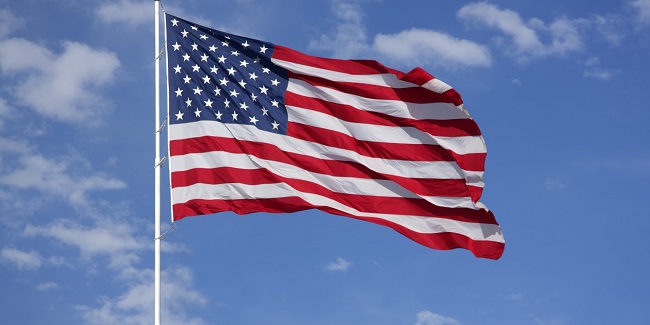
American Flag Etiquette
With the Fourth of July coming up in two days, here is a little American Flag etiquette for you from the U.S. State Department website.
Guidelines for Display of the Flag
Public Law 94-344, known as the Federal Flag Code, contains rules for handling and displaying the
U.S. flag. While the federal code contains no penalties for misusing the flag, states have their own
flag codes and may impose penalties. The language of the federal code makes clear that the flag is
a living symbol.
In response to a Supreme Court decision which held that a state law prohibiting flag burning was
unconstitutional, Congress enacted the Flag Protection Act in 1989. It provides that anyone who
knowingly desecrates the flag may be fined and/or imprisoned for up to one year. However, this law
was challenged by the Supreme Court in a 1990 decision that the Flag Protection Act violates the
First Amendment free speech protections.
Important Things to Remember
Traditional guidelines call for displaying the flag in public only from sunrise to sunset. However, the
flag may be displayed at all times if it’s illuminated during darkness. The flag should not be subject
to weather damage, so it should not be displayed during rain, snow and wind storms unless it is an
all-weather flag.
It should be displayed often, but especially on national and state holidays and special occasions.
The flag should be displayed on or near the main building of public institutions, schools during
school days, and polling places on election days. It should be hoisted briskly and lowered
ceremoniously.
The flag should never be draped or drawn back in folds. Draped red, white and blue bunting should be used
for decoration, with the blue at the top and red at the bottom.
The flag may be flown at half-staff to honor a newly deceased federal or state government official by order of
the president or the governor, respectively. On Memorial Day, the flag should be displayed at half-staff until
noon.
Other Things Not to Do with the Flag
Out of respect for the U.S. flag, never:
- dip it for any person or thing, even though state flags, regimental colors and other flags may be dipped as a mark of honor.
- display it with the union down, except as a signal of distress.
- let the flag touch anything beneath it: ground, floor, water, merchandise.
- carry it horizontally, but always aloft.
- fasten or display it in a way that will permit it to be damaged or soiled.
- place anything on the flag, including letters, insignia, or designs of any kind.
- use it for holding anything.
- use it as wearing apparel, bedding or drapery. It should not be used on a costume or athletic uniform. However, a flag patch may be attached to the uniform of patriotic organizations,
- military personnel, police officers and firefighters.
- use the flag for advertising or promotion purposes or print it on paper napkins, boxes or anything else intended for temporary use and discard.
During the hoisting or lowering of the flag or when it passes in parade or review, Americans should
stand at attention facing the flag and place their right hand over the heart. Uniformed military
members render the military salute. Men not in uniform should remove any headdress and hold it
with their right hand at their left shoulder, the hand resting over the heart. Those who are not U.S.
citizens should stand at attention.
When the flag is worn out or otherwise no longer a fitting emblem for display, it should be destroyed
in a dignified way, preferably by burning.
For more information regarding the American Flag go to:
http://answers.usa.gov/system/templates/selfservice/USAGov/#!portal/1012/article/5002/The-American-Flag-and-its-Protocol
